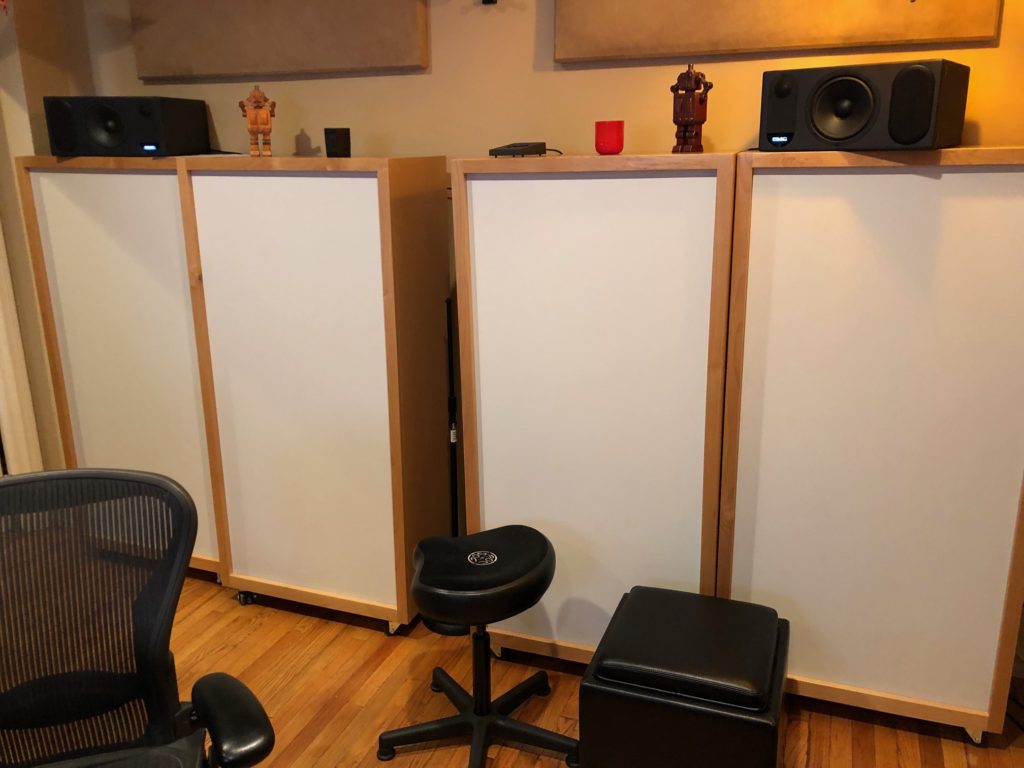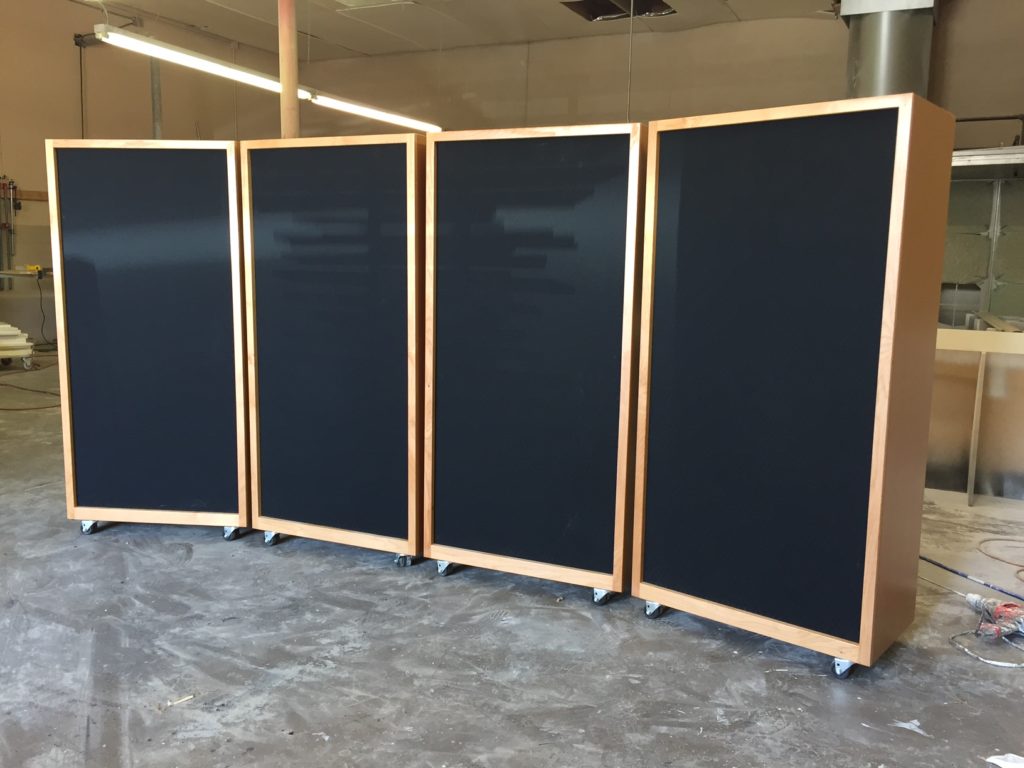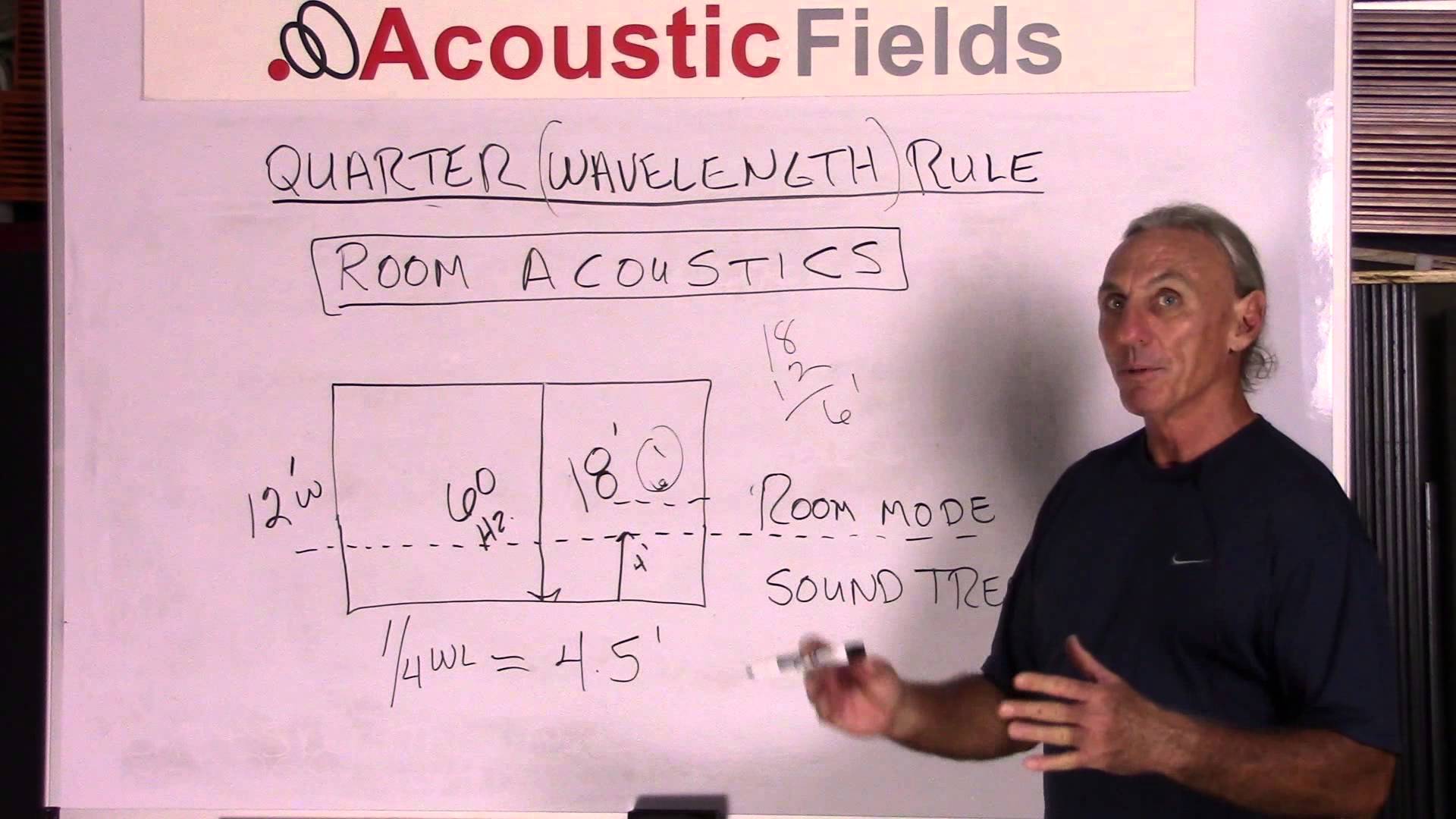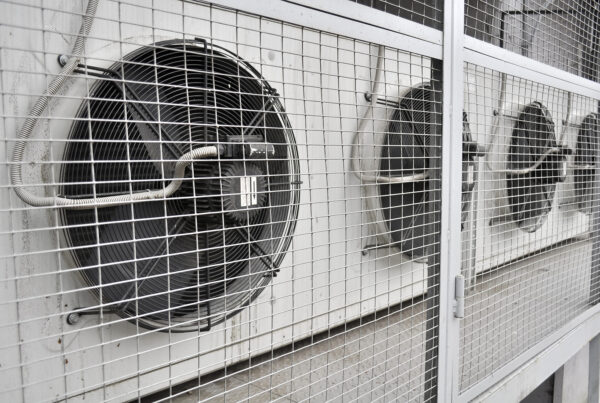The acoustical science arena moves slowly but it does progress especially when it comes to quarter wavelength or quarter wavelength rule. We have updated this blog on 11/11/19 to reflect those changes.
Here is a rule that acoustical engineers follow in creating sound-absorbing technologies. It is called the quarter wavelength rule or just a quarter wavelength. Without getting too technical, you can define the rule in its impact upon a lower frequency wavelength. Let’s use 30 Hz. as our wavelength in this example. A 30 Hz. wave is approximately 37′ long. In order to absorb this long wavelength, we need to create a sound-absorbing device that can absorb completely, at least 25% of this wavelength. That would be a distance of a little over 9′. This is the heart concept of the quarter wavelength rule.
How To Apply The Quarter Wavelength Rule
This methodology pertains to limp mass absorbing materials. A limp mass absorber is a box filled with building insulation or a bundle or bale of building insulation. It could also be a box filled with cotton material or any other sound-absorbing material. It is the 9′ length that we must focus upon. It is that quarter wavelength rule of having enough space to absorb at least 25 % of the design frequency we are going after to absorb. If we take 40 Hz. the wavelength at 28′ in total length and divide that number by 4, we get a quarter wavelength of around 7′.
Here’s a link to a free Quarter Wavelength Calculator: http://www.mcsquared.com/wavelength.htm
Bass Trap
The term bass trap is a misnomer to say the least. Low-frequency energy is never “trapped” by a box of any type of fill material. Some of the low-frequency energy that strikes the box is absorbed. Some are not and pass right through the box or cabinet. Some energy is reflected back to the source. Bass or what people should say is low-frequency energy or wavelengths can not be trapped by anything. They do not stop at any material selection including concrete and even steel. We have built rooms for clients that have two 8″ thick walls of poured concrete separated by another 6″ of air space and can still measure 30 Hz. wave activity on the outside of the wall. Trapping “bass” does not exist. Reducing the amount of the energy created by low-frequency sources is the best approach along with matching the source of the energy to the room or box it is placed within.
I explain this concept a little further in this video:
“Bass Traps”
The quarter wavelength rule shows us that in today’s marketplace that what is called a low-frequency absorber or “bass trap” can not be any such thing. First, as we discussed earlier, there really is no such thing as a “bass trap”. Secondly, the amount of space required in order to absorb low frequencies using the quarter wavelength rule goes beyond what any manufacturer of low-frequency absorbers uses in any of their product lines. Foam wedges that are 24″ thick can only go down to 90 – 100 cycles using our quarter wavelength rule. How can these be called “bass absorbers”? They can not. Special pressure designed technology is required if you are going to use a small amount of space to absorb energy below 100 Hz.

Diaphragmatic Absorbers in Studio
Pressure Waves
Low-frequency energy is all about pressure waves. Think of low-frequency energy as ocean waves. These powerful waves of energy oscillate throughout our room and are very powerful. They are the bull in the china shop. These are waves of energy that are 30′, 40′ and 50′ long. They will not fit in most rooms and require a pressure-related technology to deal with their absorption. Only diaphragmatic absorption has the horsepower to absorb this low-frequency energy. A diaphragmatic absorber has a front wall or diaphragm that vibrates in sympathy to the pressure wave. This vibration slows the wave down as it enters the inside of the cabinet. Once inside the cabinet, the internal cabinet fill lowers the pressure inside the cabinet. When the wave sees lower pressure than the atmospheric pressure it was created within, the wave collapses in strength and absorption occurs.
Helmholtz vs. Diaphragmatic
There are two technologies that you can use to absorb energy below 100 Hz. You can use diaphragmatic absorption or Helmholtz resonators. Helmholtz resonators require a cabinet or tube with a slot that has a calculated width and length. The cabinet itself must have a predetermined and calculated depth and volume. A diaphragmatic absorber is a sealed unit with a cabinet similar to a Helmholtz resonator but the cabinet has an internal fill material that also contributes to the overall unit’s performance. The cabinet’s depth contributes to the level of absorption and the cabinet’s internal fill material affects the rate of absorption from that designed for resonant frequency. Helmholtz resonators are frequency specific or narrow band in their absorption capacities. You need many units to absorb a narrow frequency range. Diaphragmatic absorbers are broadband and can cover larger frequency responses. For example, a Helmholtz resonator may absorb from 40 – 50 Hz. A diaphragmatic absorber can absorb from 30 – 300 Hz. and have a higher rate of absorption.
Bending The Laws
A limp mass absorber which is foam or boxes filled with building insulation must correspond to the quarter wavelength rule and provide the necessary space requirements in order to achieve their lower frequency performance parameters. If they do not, and most don’t, then they won’t work. If you have a box filled with building insulation or foam, you will need a box 11.3′ long to absorb 100 % at 100 Hz. Only specially designed pressure-based technology can bend the laws of physics and absorb a large amount of energy in a small amount of space.
Treatment Types
Do not be misled by manufacturers that claim their boxes filled with building insulation absorb large amounts of low-frequency energy. Low-frequency energy absorption which is pressure based requires a pressure-based technology to treat. Of the three main types; Helmholtz, membrane, and diaphragmatic, only diaphragmatic absorption technology can get you the rates and levels of absorption to deal with the higher amplitude issues created by low-frequency energy waves in our small audio rooms of today.

Diaphragmatic Absorbers
To view the Diaphragmatic Absorbers offered by Acoustic Fields click here.
In Summary
So I hope that helps you. If you have any questions at any time I am always on hand to help answer them. Leave them in the comments section or email me at info@acousticfields.com. If you would like to learn more about room acoustics please sign up for my free videos and ebook by joining the mailing list here. I send room tuning tips and things for you to test in your room every Wednesday. They are easy to follow and really help you enjoy more of your music.
Thanks and speak soon
Dennis








Thanks for this article, which I have read with great interest.
I am planning to build a small studio in my garden this spring and I am wondering if there is any sensible application of the quarter wavelength rule when considering the size of the cavity between the exterior and inner stud walls?
Hi Matt,
Cavity depth is important in determining the lowest frequency of absorption that can be obtained within that structure. The cavity fill is critical in determining the rate of absorption above that frequency. All of these variables must be considered when designing any room for sound quality. Go to this link and fill out the required information about your new room and I will be in a better position to assist you https://www.acousticfields.com/free-acoustic-treatment-room-analysis-tell-us-room/u.